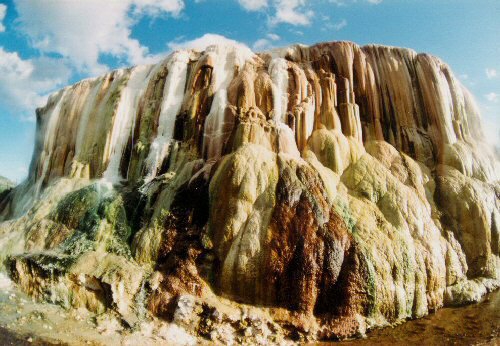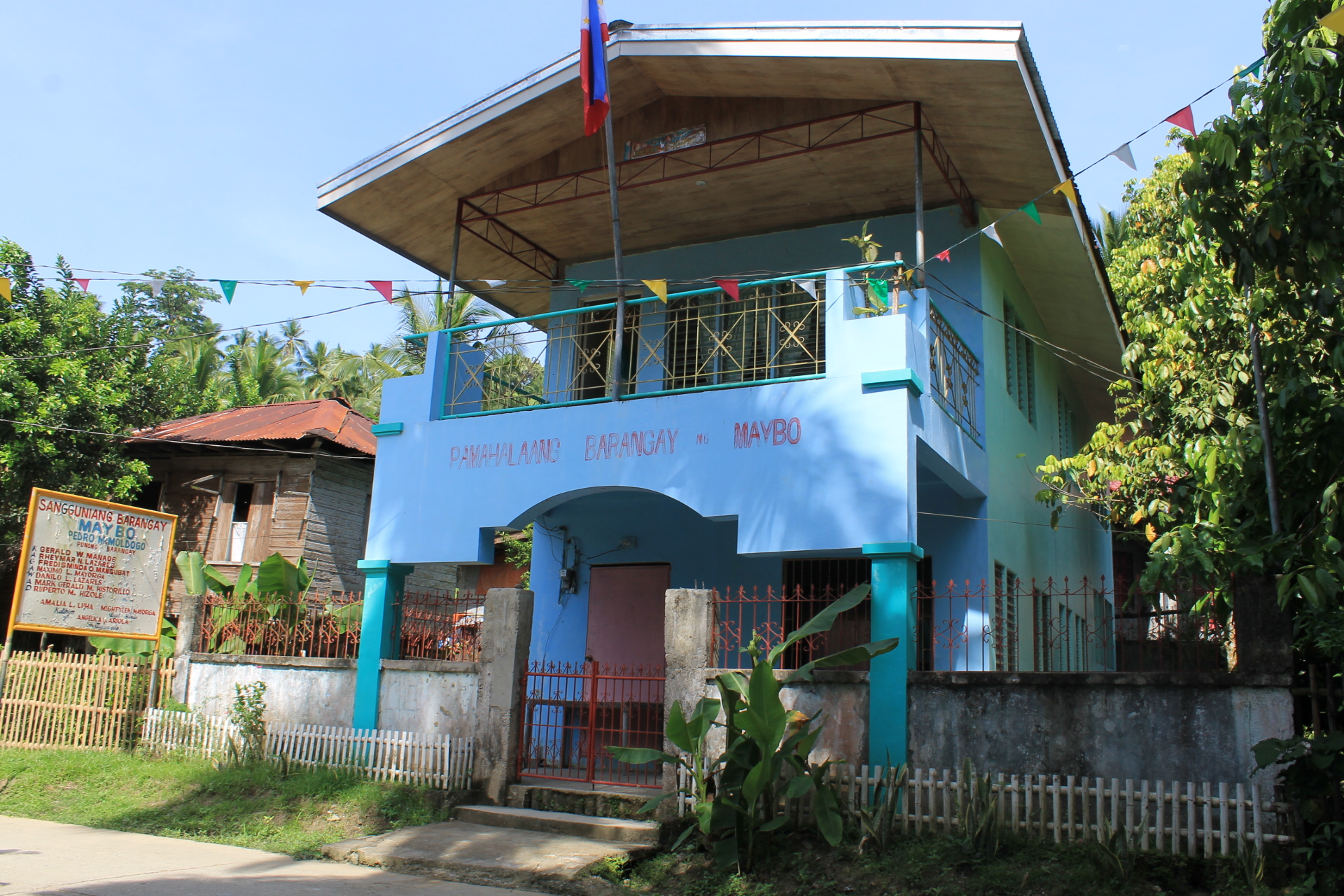|
Pansol
Pansol is an urban barangay in Calamba, Laguna, Calamba, Laguna (province), Laguna, Philippines. It is located at the southeast edge of the city. The barangay is situated at the foot of Mount Makiling near the city's border with Los Baños, Laguna, Los Baños and is known for its hot springs. Economy The resorts industry of Pansol contributes significantly to the barangay's economy and has been known as a tourist destination for its resorts since the 1970s. As of October 2009, there are about 700 resorts in Pansol. Geography Pansol is subdivided into seven puroks numbered I to VII. The barangay covers a total area of . It is surrounded by five other barangays. Population Education Pansol is the site of at least two elementary schools namely E. Baretto Sr. Elementary School and Perpetual Help Elementary School as well as a senior high school, the E. Baretto National High School. References {{Laguna Special Zones Barangays of Calamba, Laguna Spa towns in the P ... [...More Info...] [...Related Items...] OR: [Wikipedia] [Google] [Baidu] |
Calamba, Laguna
Calamba, officially the City of Calamba (), is a Cities of the Philippines#Legal classification, component city in the Provinces of the Philippines, province of Laguna (province), Laguna, Philippines. According to the 2020 census, it has a population of 539,671 people making it the largest city in the province. Calamba is the regional center of the Calabarzon region. It is situated south of Manila and west of Santa Cruz, Laguna, Santa Cruz. The city is known as the "Spring Resort Capital of the Philippines" because of its numerous hot spring resorts, which are mostly located in Barangays Pansol, Bucal, Bagong Kalsada, and Lingga. According to the 2020 census, Calamba has a population of 539,671 people, making it the most populous local government unit in Laguna. It is the fifth-densest city in the province with more than 2,600 people per square kilometer after San Pedro, Laguna, San Pedro, Biñan, Cabuyao, and Santa Rosa, Laguna, Santa Rosa. Based on the overall rankings of t ... [...More Info...] [...Related Items...] OR: [Wikipedia] [Google] [Baidu] |
Bucal
Calamba, officially the City of Calamba (), is a component city in the province of Laguna, Philippines. According to the 2020 census, it has a population of 539,671 people making it the largest city in the province. Calamba is the regional center of the Calabarzon region. It is situated south of Manila and west of Santa Cruz. The city is known as the "Spring Resort Capital of the Philippines" because of its numerous hot spring resorts, which are mostly located in Barangays Pansol, Bucal, Bagong Kalsada, and Lingga. According to the 2020 census, Calamba has a population of 539,671 people, making it the most populous local government unit in Laguna. It is the fifth-densest city in the province with more than 2,600 people per square kilometer after San Pedro, Biñan, Cabuyao, and Santa Rosa. Based on the overall rankings of the 2014 Cities and Municipalities Index, the city ranked 18th in the overall competitiveness (cities ranking) and first among cities in the Calabarzon re ... [...More Info...] [...Related Items...] OR: [Wikipedia] [Google] [Baidu] |
Mount Makiling
Mount Makiling (also spelled Maquiling) is an inactive stratovolcano located in the provinces of Laguna and Batangas on the island of Luzon in the Philippines. The mountain rises to an elevation of above mean sea level and is the highest feature of the Laguna Volcanic Field. The volcano has no recorded historic eruption but volcanism is still evident through geothermal features like mud spring and hot springs. South of the mountain is the Makiling–Banahaw Geothermal Plant. The Philippine Institute of Volcanology and Seismology (PHIVOLCS) classifies the volcano as " Inactive". Mount Makiling is a state-owned forest reserve administered by the University of the Philippines Los Baños. Prior to its transfer to the university, the mountain was the first national park of the Philippines. Mount Makiling National Park was established on February 23, 1933, by Proclamation No. 552. However, it was decommissioned as a national park on June 20, 1963, by Republic Act No. 3523 when i ... [...More Info...] [...Related Items...] OR: [Wikipedia] [Google] [Baidu] |
Los Baños, Laguna
Los Baños (IPA: Help:IPA/Tagalog, [lɔs bɐˈɲɔs]), officially the Municipality of Los Baños (), colloquially 'elbi' or simply LB, is a municipality of the Philippines, municipality in the Philippine Province, province of Laguna (province), Laguna, Philippines. According to the 2020 census, it has a population of 115,353 people. It has a total land area of and is bordered on the south and south-west by Mount Makiling and Santo Tomas, Batangas, Santo Tomas in Batangas, on the north by Laguna de Bay, on the north-west by Calamba, Laguna, Calamba and on the east by the town of Bay, Laguna, Bay. The town is located southeast of Manila and is easily accessible via the South Luzon Expressway along with Manila South Road and Calamba–Pagsanjan Road. The municipality lies on the northern slopes of the long dormant volcano Mount Makiling and is known among tourists for its hot spring resorts. Los Baños also hosts two constituent universities of the University of the Philippine ... [...More Info...] [...Related Items...] OR: [Wikipedia] [Google] [Baidu] |
Barangay
The barangay (; abbreviated as Brgy. or Bgy.), historically referred to as ''barrio'', is the smallest Administrative divisions of the Philippines, administrative division in the Philippines. Named after the Precolonial barangay, precolonial polities of the same name, modern barangays are political subdivisions of cities and municipalities which are analogous to Village#Philippines, villages, districts, neighborhoods, suburbs, or boroughs. The word ''barangay'' originated from ''balangay'', a type of boat used by a group of Austronesian peoples when they migrated to the Philippines. All Municipalities of the Philippines, municipalities and Cities of the Philippines, cities in the Philippines are politically subdivided into barangays, with the exception of the municipalities of Adams, Ilocos Norte, Adams in Ilocos Norte and Kalayaan, Palawan, Kalayaan in Palawan, each containing a single barangay. Barangays are sometimes informally subdivided into smaller areas called ''purok'' ( ... [...More Info...] [...Related Items...] OR: [Wikipedia] [Google] [Baidu] |
Laguna De Bay
Laguna de Bay ( Spanish for "Lagoon/Lake of Bay"; , ), also known as Laguna Lake and alternatively spelled "Laguna de Bae", is the largest lake in the Philippines. It is located southeast of Metro Manila, between the provinces of Laguna to the south and Rizal to the north. A freshwater lake, it has a surface area of 911–949 km2 (352–366 sq mi), with an average depth of about and an elevation of about one meter above sea level. The lake is shaped like a crow's foot, with two peninsulas jutting out from the northern shore and filling the large volcanic Laguna Caldera. In the middle of the lake is the large island of Talim. The lake is one of the primary sources of freshwater fish in the country. Its water drains to Manila Bay via the Pasig River. Environmental issues such as water quality problems created by population pressure and industrialization, invasive species and overfishing are of concern for the lake, hurting its economic importance to the country. As po ... [...More Info...] [...Related Items...] OR: [Wikipedia] [Google] [Baidu] |
Hot Springs
A hot spring, hydrothermal spring, or geothermal spring is a Spring (hydrology), spring produced by the emergence of Geothermal activity, geothermally heated groundwater onto the surface of the Earth. The groundwater is heated either by shallow bodies of magma (molten rock) or by circulation through fault (geology), faults to hot rock deep in the Earth's crust. Hot spring water often contains large amounts of dissolved minerals. The chemistry of hot springs ranges from acid sulfate springs with a pH as low as 0.8, to alkaline chloride springs saturated with silica, to bicarbonate springs saturated with carbon dioxide and carbonate minerals. Some springs also contain abundant dissolved iron. The minerals brought to the surface in hot springs often feed communities of extremophiles, microorganisms adapted to extreme conditions, and it is possible that life on Earth had its origin in hot springs. Humans have made use of hot springs for bathing, relaxation, or medical therapy for th ... [...More Info...] [...Related Items...] OR: [Wikipedia] [Google] [Baidu] |
Barangay
The barangay (; abbreviated as Brgy. or Bgy.), historically referred to as ''barrio'', is the smallest Administrative divisions of the Philippines, administrative division in the Philippines. Named after the Precolonial barangay, precolonial polities of the same name, modern barangays are political subdivisions of cities and municipalities which are analogous to Village#Philippines, villages, districts, neighborhoods, suburbs, or boroughs. The word ''barangay'' originated from ''balangay'', a type of boat used by a group of Austronesian peoples when they migrated to the Philippines. All Municipalities of the Philippines, municipalities and Cities of the Philippines, cities in the Philippines are politically subdivided into barangays, with the exception of the municipalities of Adams, Ilocos Norte, Adams in Ilocos Norte and Kalayaan, Palawan, Kalayaan in Palawan, each containing a single barangay. Barangays are sometimes informally subdivided into smaller areas called ''purok'' ( ... [...More Info...] [...Related Items...] OR: [Wikipedia] [Google] [Baidu] |
Philippines
The Philippines, officially the Republic of the Philippines, is an Archipelagic state, archipelagic country in Southeast Asia. Located in the western Pacific Ocean, it consists of List of islands of the Philippines, 7,641 islands, with a total area of roughly 300,000 square kilometers, which are broadly categorized in Island groups of the Philippines, three main geographical divisions from north to south: Luzon, Visayas, and Mindanao. With a population of over 110 million, it is the world's List of countries and dependencies by population, twelfth-most-populous country. The Philippines is bounded by the South China Sea to the west, the Philippine Sea to the east, and the Celebes Sea to the south. It shares maritime borders with Taiwan to the north, Japan to the northeast, Palau to the east and southeast, Indonesia to the south, Malaysia to the southwest, Vietnam to the west, and China to the northwest. It has Ethnic groups in the Philippines, diverse ethnicities and Culture o ... [...More Info...] [...Related Items...] OR: [Wikipedia] [Google] [Baidu] |
Purok
A ''purok'' () is an informal division within a barangay in the Philippines. While not officially considered a local government unit (LGU), a ''purok'' often serves as a unit for delivering services and administration within a barangay. ''Puroks'' are usually numbered (e.g. Purok 2, Purok B, Purok 7-C) but some have names. A ''purok'' is typically composed of twenty to fifty or more households, depending on the particular geographical location and cluster of houses. The term ''purok'' is often applied to a neighborhood (zone) within an urbanized barangay, or a portion (district) of a less densely populated, but still relatively geographically compact, barangay. This contrasts with the '' sitio'', which is usually a cluster of households (hamlet) in a more dispersed, rural barangay. If created and given a mandate by an ordinance of the barangay, municipality, or city, a ''purok'' could perform government functions under the coordination and supervision of their local officials ... [...More Info...] [...Related Items...] OR: [Wikipedia] [Google] [Baidu] |







